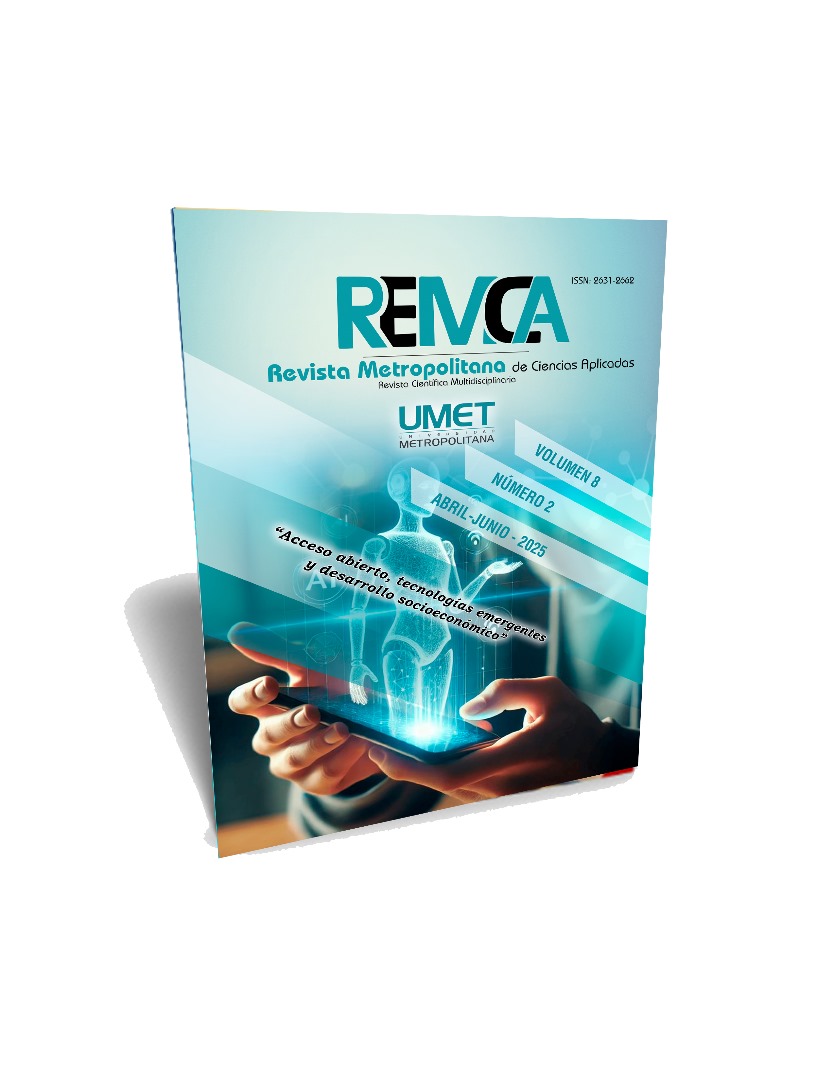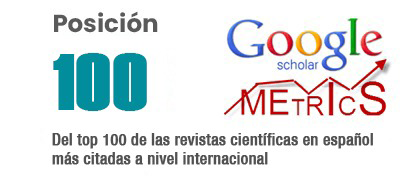Characterization of thyroid nodules on 2D ultrasound and ultrasound elastography for the detection of malignancy
DOI:
https://doi.org/10.62452/wjahx085Keywords:
Thyroid nodules, elastography, diagnostic optimizationAbstract
Thyroid nodules are common findings, although only a small percentage are malignant, with papillary carcinoma being the most frequent. Current approaches include ultrasound and FNA, with limitations in reducing unnecessary biopsies. This study aimed to evaluate the usefulness of elastography as a complementary tool to differentiate between benign and malignant lesions. An observational and analytical analysis was performed based on previous studies that used elastography in strain and shear-wave modalities, integrating it with classification systems such as ACR-TIRADS and correlating it with histopathological findings. Results: Given the high incidence of thyroid nodules, it is essential to implement less invasive and more precise strategies for their characterization, minimizing unnecessary risks and costs. Elastography stands out for measuring tissue stiffness, a crucial factor in identifying malignancy. Elastography shows high sensitivity and specificity; its use is not standardized and depends on the operator's experience. The results confirm that, when combined with ultrasound and classification systems, elastography optimizes the selection of nodules for biopsy, reducing unnecessary procedures and improving diagnosis. Elastography is a promising tool that, with greater standardization and availability, can transform the clinical management of thyroid nodules.
Downloads
References
Buitrago-Gómez, N., García-Ramos, A., Salom, G., Cuesta-Castro, D. P., Aristizabal, N., Hurtado, N., Aros, V., Quiñonez, C., Ocampo-Chaparro, J., Torres-Grajales, J., Duque, J., & Abreu-Lomba, A. (2023). Caracterización sociodemográfica, clínica y ecográfica de la enfermedad de nódulos tiroideos y su relación con la malignidad en un centro de alta complejidad colombiano. Medicina de Familia SEMERGEN, 49(6). https://www.sciencedirect.com/science/article/abs/pii/S1138359323000941
Cui, X. W., Li, K. N., Yi, A. J., Wang, B., Wei, Q., Wu, G. G., & Dietrich, C. F. (2022). Ultrasound elastography. Endoscopic ultrasound, 11(4), 252–274. https://doi.org/10.4103/EUS-D-21-00151
De Mora, D., Arruti, D., Tavitián, D., Sancho, D., Rodríguez, D., Brum, D., & Servente, D. (2022). Elastografía por ultrasonido: revisión de aspectos técnicos y aplicaciones clínicas. Parte 2. Revista De ImagenologíA, 26(1), 05-16. https://sriuy.org.uy/ojs/index.php/Rdi/article/view/122
Díaz-Lazo H, Gago F, Victo-rio-Ávila C, Chávez H, Díaz C, radiólogo M, et al (2019). Utilidad de la elastografía en la evaluación del nódulo tiroideo benigno y maligno. 19. 48-54.
Fresilli, D., David, E., Pacini, P., Del Gaudio, G., Dolcetti, V., Lucarelli, G. T., Di Leo, N., Bellini, M. I., D'Andrea, V., Sorrenti, S., Mascagni, D., Biffoni, M., Durante, C., Grani, G., De Vincentis, G., & Cantisani, V. (2021). Thyroid Nodule Characterization: How to Assess the Malignancy Risk. Update of the Literature. Diagnostics (Basel, Switzerland), 11(8), 1374. https://doi.org/10.3390/diagnostics11081374
Gómez-Pérez, A. M., Fernández-García, J. C., Iglesias, P., Díez, J. J., Álvarez-Escolá, C., Lecumberri, B., Lucas-Martín, A., Donnay, S., Cabrejas-Gómez, C., Menéndez-Torre, E., Galofré, J. C., & en representación del Área de Conocimiento de Tiroides de la SEEN (2020). Diagnosis and treatment of thyroid nodules in Spain. Results of a national survey. Diagnóstico y tratamiento del nódulo tiroideo en España. Resultados de una encuesta nacional. Endocrinologia, diabetes y nutricion, 67(7), 438–445. https://doi.org/10.1016/j.endinu.2019.10.003
Hamill, C., Ellis, P., & Johnston, P. C. (2022). Ultrasound for the assessment of thyroid nodules: an overview for non-radiologists. British journal of hospital medicine (London, England., 83(7), 1–7. https://doi.org/10.12968/hmed.2022.0071
Kairuz, E. (2022). Correlación entre elastografía tiroidea y anatomía patológica de nódulos tiroideos. Methodo Investigación Aplicada a las Ciencias Biológicas, 7(1). https://methodo.ucc.edu.ar/index.php/methodo/article/view/299
Kant, R., Davis, A., & Verma, V. (2020). Thyroid Nodules: Advances in Evaluation and Management. American family physician, 102(5), 298–304. https://pubmed.ncbi.nlm.nih.gov/32866364/
Lopes, S. C., Shah, B., & Eloy, C. (2023). Thyroid cytology: The reality before and after the introduction of ultrasound classification systems for thyroid nodules. Endocrinologia, diabetes y nutricion, 70(1), 39–47. https://doi.org/10.1016/j.endien.2022.06.016
Mena, G., Montalvo, A., Ubidia, M., Olmedo, J., Guerrero, A., & Leon-Rojas, J. E. (2023). Elastography of the thyroid nodule, cut-off points between benign and malignant lesions for strain, 2D shear wave real time and point shear wave: a correlation with pathology, ACR TIRADS and Alpha Score. Frontiers in endocrinology, 14. https://doi.org/10.3389/fendo.2023.1182557
Mentzel, H. J., Glutig, K., Gräger, S., Krüger, P. C., & Waginger, M. (2022). Ultrasound elastography in children - nice to have for scientific studies or arrived in clinical routine? Molecular and cellular pediatrics, 9(1), 11. https://doi.org/10.1186/s40348-022-00143-1
Minda Reyes, J. A., Barberán Astudillo, L. P., Paredes Ferreira, E. G., & Valarezo Lainez, M. F. (2022). Avances en la evaluación y manejo del nódulo tiroideo, una revisión de la literatura. Journal of American Health, 5(1). https://jah-journal.com/index.php/jah/article/view/116
Rago, T., & Vitti, P. (2022). Risk Stratification of Thyroid Nodules: From Ultrasound Features to TIRADS. Cancers, 14(3), 717. https://doi.org/10.3390/cancers14030717
Ríos, A., Rodríguez, J. M., Cepero, A., &Hernandez, A. M. (2020). Utilidad de la elastografía en los nódulos tiroideos con citología indeterminada o sospechosa de malignidad. Endocrinol Diabetes Nutr., 64(3), 180–182. https://www.elsevier.es/es-revista-endocrinologia-diabetes-nutricion-13-articulo-utilidad-elastografia-nodulos-tiroideos-con-S2530016417300034
Servente, D., Avondet, D., Milans, D., Benech, D., Negreira, D., & Brum, D. (2021). Elastografía por ultrasonido: revisión de aspectos técnicos y aplicaciones clínicas. Parte 1. Revista De ImagenologíA, 24(2), 37 - 48. https://sriuy.org.uy/ojs/index.php/Rdi/article/view/97
Zatarain Gulmar, A., Lozano Zalce, H., Hernández Lara, H., & Simental Ochoa, F. (2019). Elastografía por ultrasonido en nódulos tiroideos: ¿es útil para distinguir entre patología benigna y maligna? Ultrasound elastography of thyroid nodules: is it useful for distinguishing between benign and malignant pathology? Acta Médica Grupo Ángeles, 17(3). https://www.scielo.org.mx/scielo.php?script=sci_arttext&pid=S1870-72032019000300311
Zhao, C. K., & Xu, H. X. (2019). Ultrasound elastography of the thyroid: principles and current status. Ultrasonography (Seoul, Korea), 38(2), 106–124. https://doi.org/10.14366/usg.18037
Downloads
Published
Issue
Section
License
Copyright (c) 2025 Sebastian Andrés Minda-Chafla, Lorena Bibiana Erazo-Beltrán (Autor/a)

This work is licensed under a Creative Commons Attribution-NonCommercial-ShareAlike 4.0 International License.
Authors who publish in Revista Metropolitana de Ciencias Aplicadas (REMCA), agree to the following terms:
1. Copyright
Authors retain unrestricted copyright to their work. Authors grant the journal the right of first publication. To this end, they assign the journal non-exclusive exploitation rights (reproduction, distribution, public communication, and transformation). Authors may enter into additional agreements for the non-exclusive distribution of the version of the work published in the journal, provided that acknowledgment of its initial publication in this journal is given.
© The authors.
2. License
The articles are published in the journal under the Creative Commons Attribution-NonCommercial-ShareAlike 4.0 International License (CC BY-NC-SA 4.0). The terms can be found at: https://creativecommons.org/licenses/by-nc-sa/4.0/deed.en
This license allows:
- Sharing: Copying and redistributing the material in any medium or format.
- Adapting: Remixing, transforming, and building upon the material.
Under the following terms:
- Attribution: You must give appropriate credit, provide a link to the license, and indicate if any changes were made. You may do this in any reasonable manner, but not in any way that suggests the licensor endorses or sponsors your use.
- NonCommercial: You may not use the material for commercial purposes.
- ShareAlike: If you remix, transform, or build upon the material, you must distribute your creation under the same license as the original work.
There are no additional restrictions. You may not apply legal terms or technological measures that legally restrict others from doing anything the license permits.




